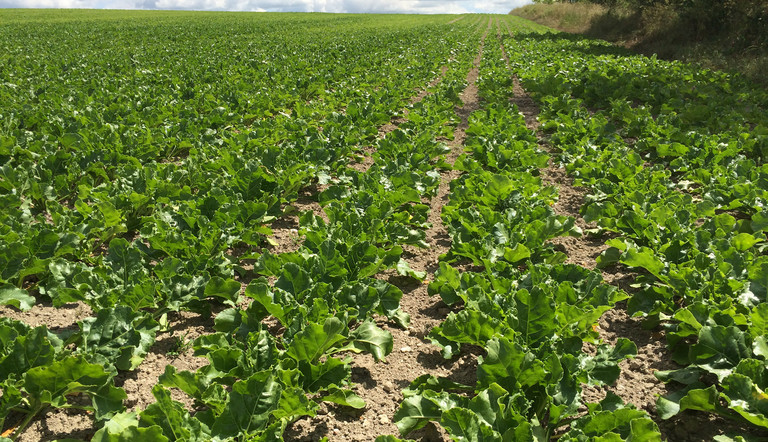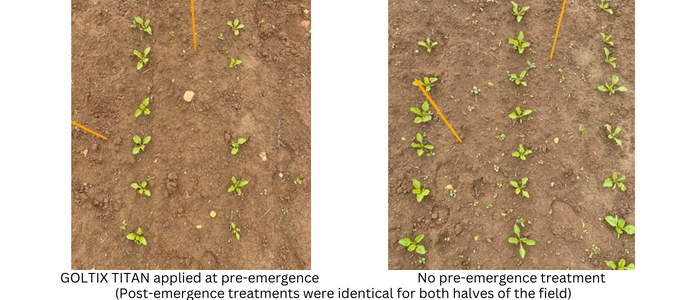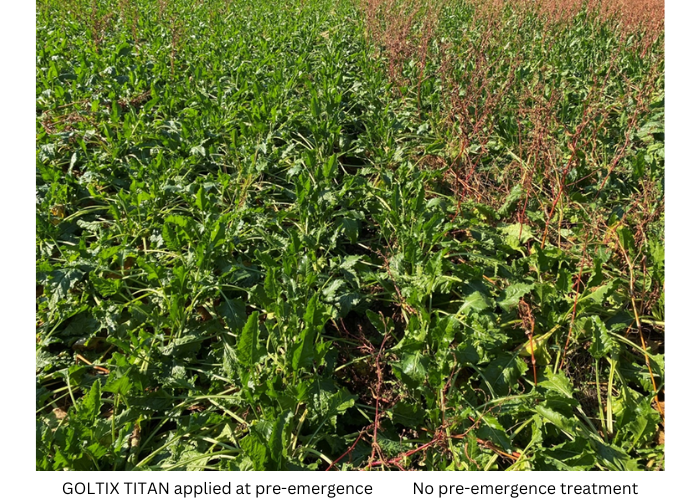
Powering-Up sugar beet weed control

In recent years sugar beet crop protection programmes have predominantly relied on phenmedipham based herbicides to control the majority of weeds. However, as weed populations have diversified due to changes in agricultural practices, and legislative changes have forced phenmedipham herbicides to use less effective suspension concentrate formulations, it is more important than ever to combine active ingredients to provide complete control.
Powering-up weed control programmes through the application of metamitron and quinmerac-based herbicides is therefore advised, especially as the inclusion of these active ingredients in crop protection programmes can give a yield lift in the range of 10-20% compared to crops where weed control is below par.
The inclusion of pre-emergence herbicides such as Goltix (700g/l metamitron) or Goltix Titan (525g/l metamitron and 40g/l quinmerac) enables growers to target a wider range of weeds including cleavers, bindweed, black nightshade, fool’s parsley and common field speedwell, with trials suggesting yields can be augmented by 7.5t/ha and as much as 21t/ha where weed burdens are at their highest. [1]
Prioritising applications
Those crops which might not receive a post-emergence herbicide application at the ideal timing – either due to time constraints or wet weather preventing applications being made on heavier land – should be prioritised for a pre-emergence treatment as the application of a residual herbicide will ensure these crops are protected ahead of time.
Likewise, a pre-emergence application will also be useful on land with a high weed burden (either in terms of difficult to control species or sheer population of weeds) to ‘soften up’ weeds ahead of a subsequent post-emergence treatment.
Timing is key
Because modern sugar beet varieties are so quick to germinate, pre-emergence herbicides should ideally be applied within 24-48 hours of drilling and certainly within a maximum of five days after drilling.
Where an early post-emergence treatment is more appropriate (for example on soils with a high organic matter content), Goltix Titan will provide excellent activity against several of the more difficult to control weeds such as cleavers, orache and bindweed.
Pre-emergence treatments get sugar weed control off to the best start
Split field trials carried out by ADAMA have shown that the addition of Goltix Titan at the beginning of a pre- and post-emergence programme provides superior weed control compared to programmes which rely solely on contact action at post-emergence.


GOLTIX® 70 SC contains 700 g/L metamitron, the key residual herbicide active for sugar beet and fodder beet weed control programmes. It demonstrates excellent crop safety and controls a range of weeds including fat hen, groundsel and red dead nettle.
GOLTIX TITAN® is a pre- and post-emergence herbicide for use against annual broad-leaved weeds in sugar beet and fodder beet. Containing 40 g/L quinmerac and 525 g/L metamitron, it targets a wide range of weeds including black nightshade, cleavers, fat hen, groundsel, red dead nettle, bindweed, shepherd’s purse, fool’s parsley and common field speedwell.
[1] Adjusted yield benefits from Goltix Titan based treatments beginning with a pre-em in BBRO 2019 trials ranged from + 7.5 t/ha (Morley) to + 21 T/ha (Bracebridge heath)